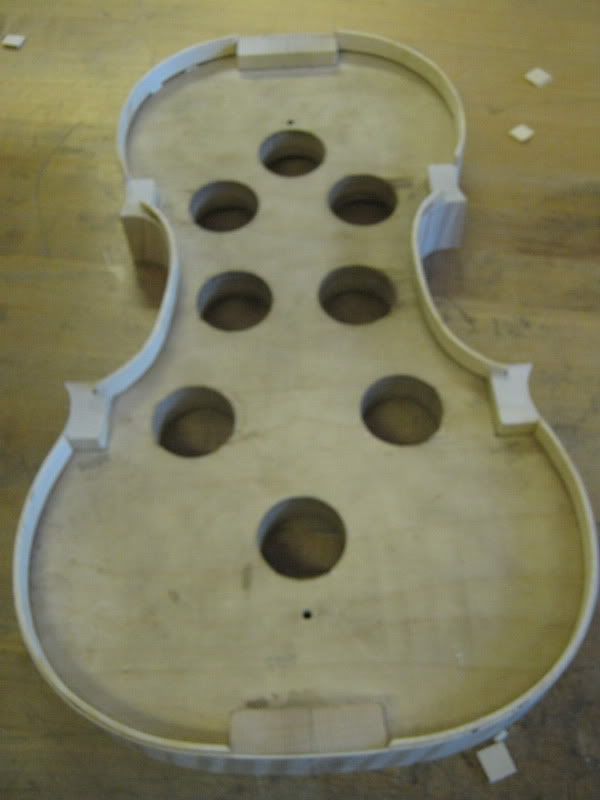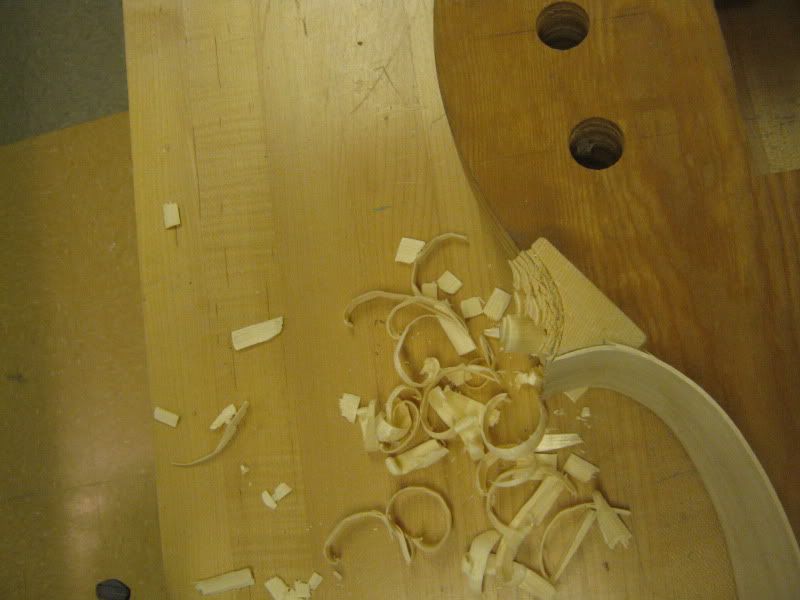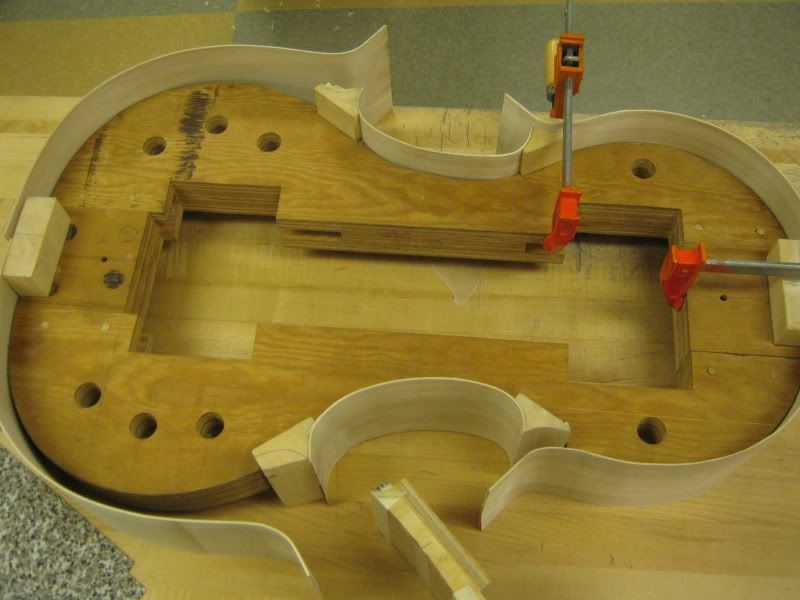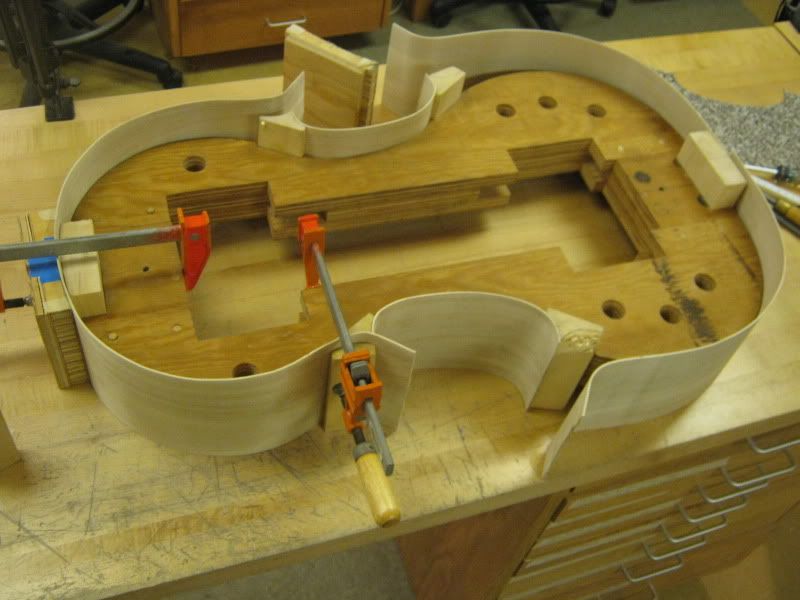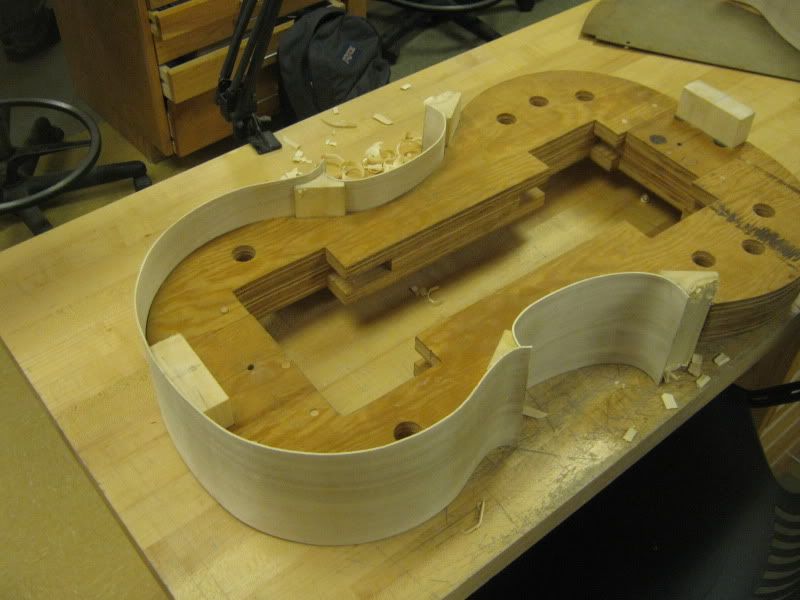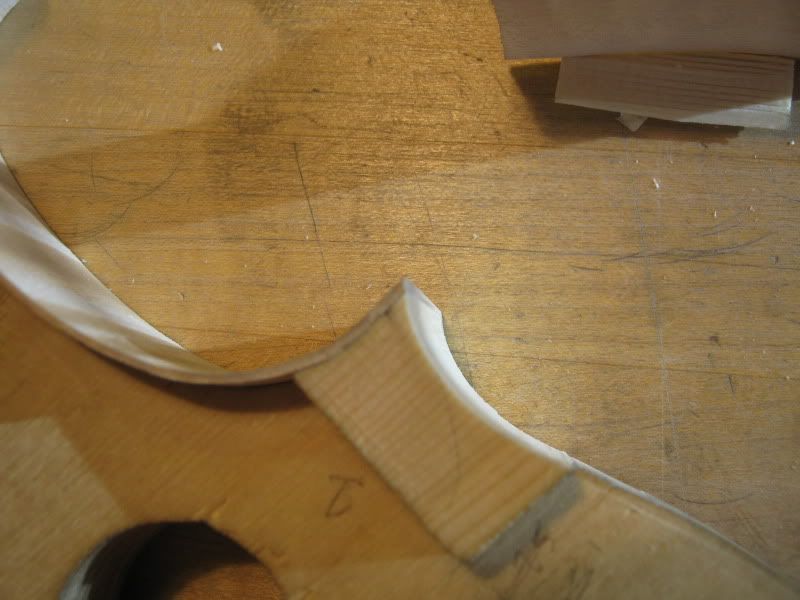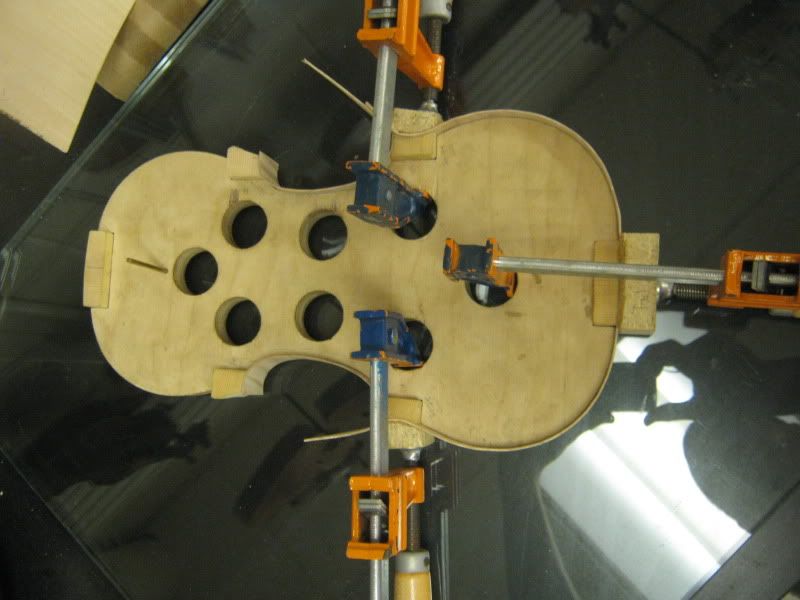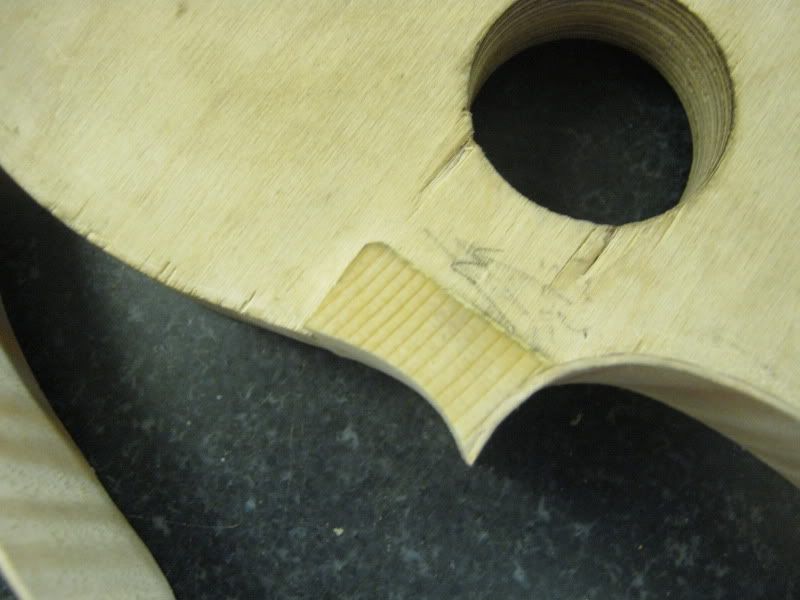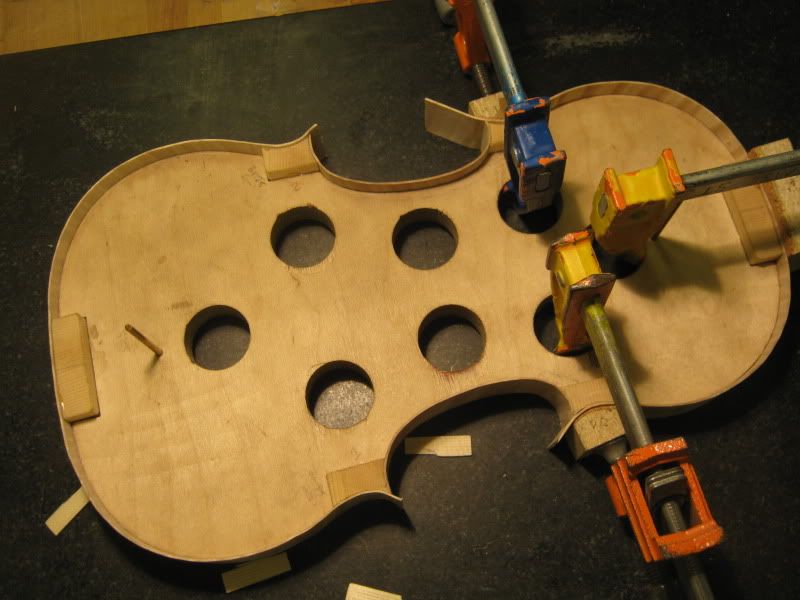There are 2 somewhat tricks to these. Instead of just gluing all of the linings up to a butt joint to each block, the C bout linings require you to notch out the blocks into a mortise for the lining to fit into. So in the last 1/2" or so of the C bout to block,you kind of break off of the bend of the C bout, so there is a gap between the c bout and lining in the corner of the block. (Notice picture)
The reason for notching a mortise into the block with a gap between the lining is pretty simple. If you notched it to stay tight against the c bout, you'd be cutting away glue surface of the block, which would make the rib a bit less secured.
Here's the over view of the C bout linings, notched into the blocks:
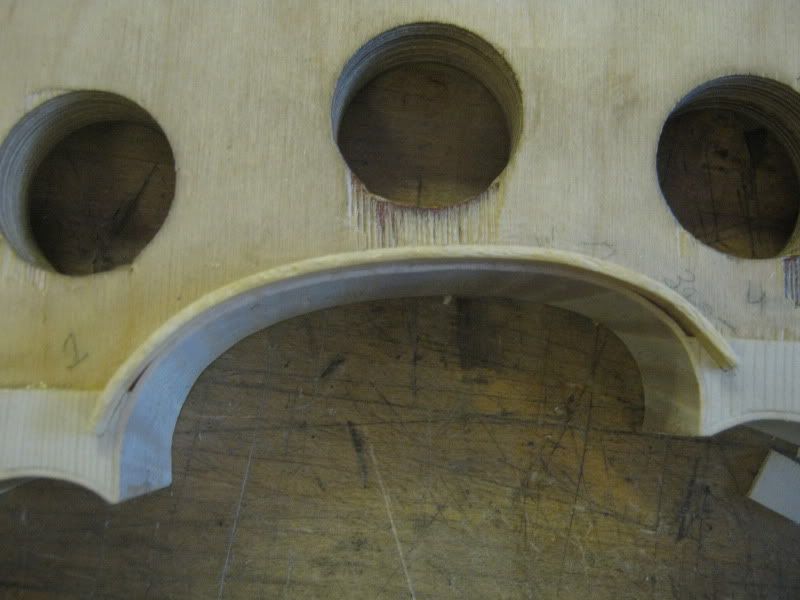
So the other little trick is tapering the ends of the upper and lower bout linings to a point, and cutting a slight pie like piece out of the corner of the blocks, so that it can tuck in tight to the corners of the block with out pulling out. This basically clamps it's self fairly tight to the ribs assuming the lengths are dead on.
Here's a picture of a corner:
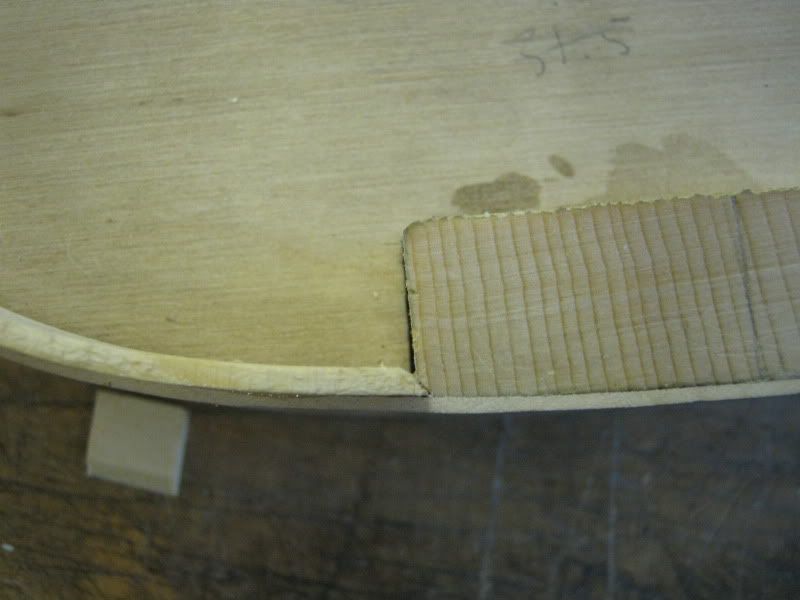
So as an overview all of the linings are in, the C bouts are notched into a mortise and tenon type of joint to keep the linings held in, and the upper and lower bout linings are tapered into the corners to be held tight. Keep in mind, when you do the linings, you can't do both sides or your mold is going to be stuck inside your ribs. Unless of course, it's a break away mold in which that won't even matter.
